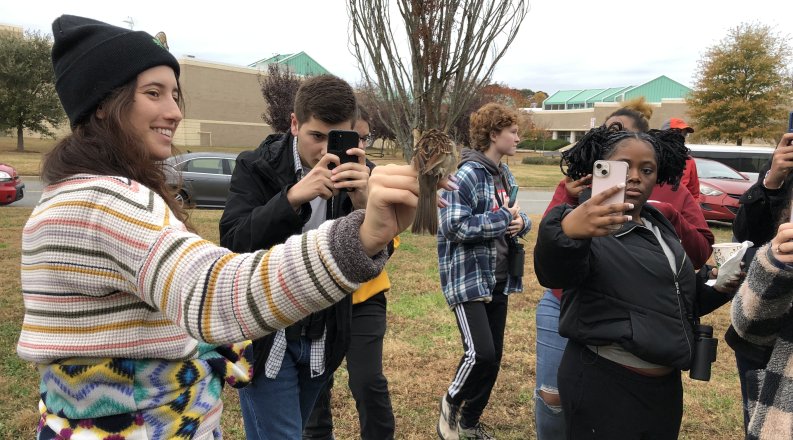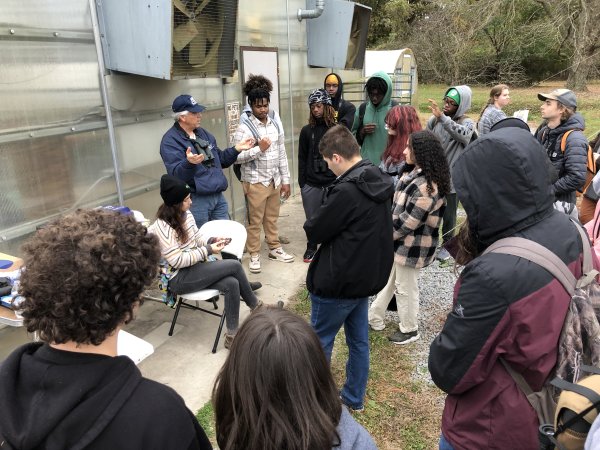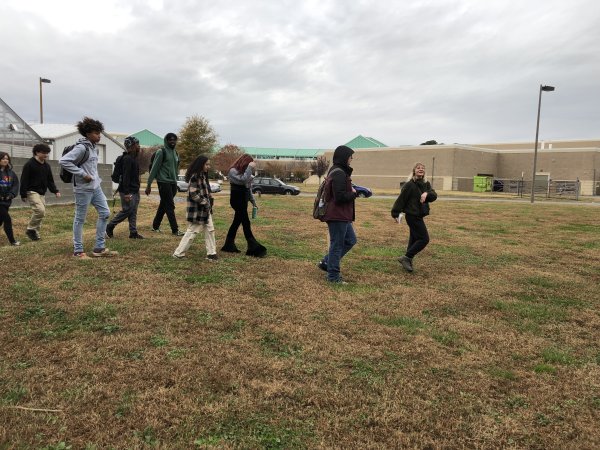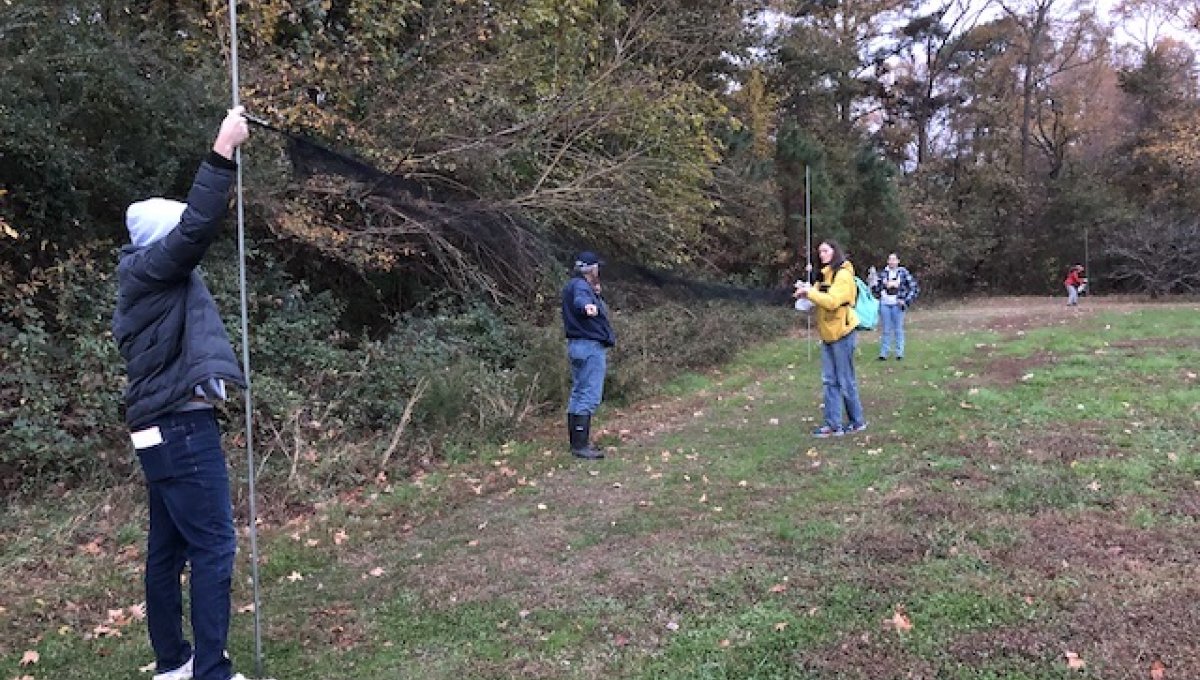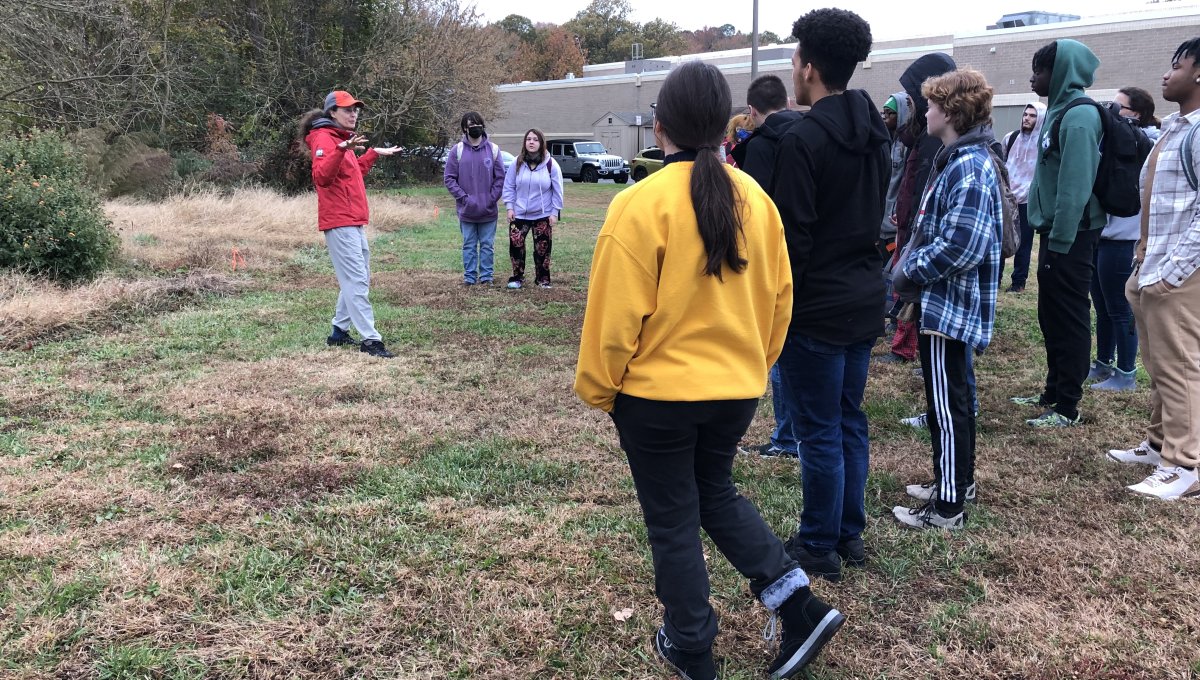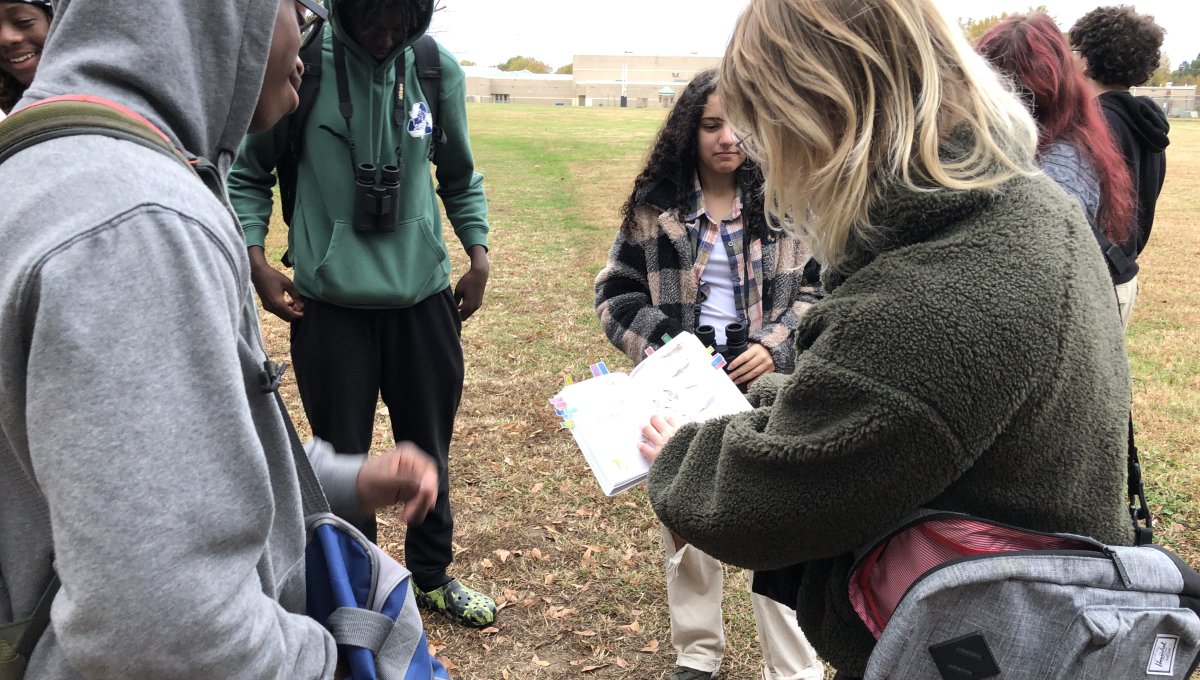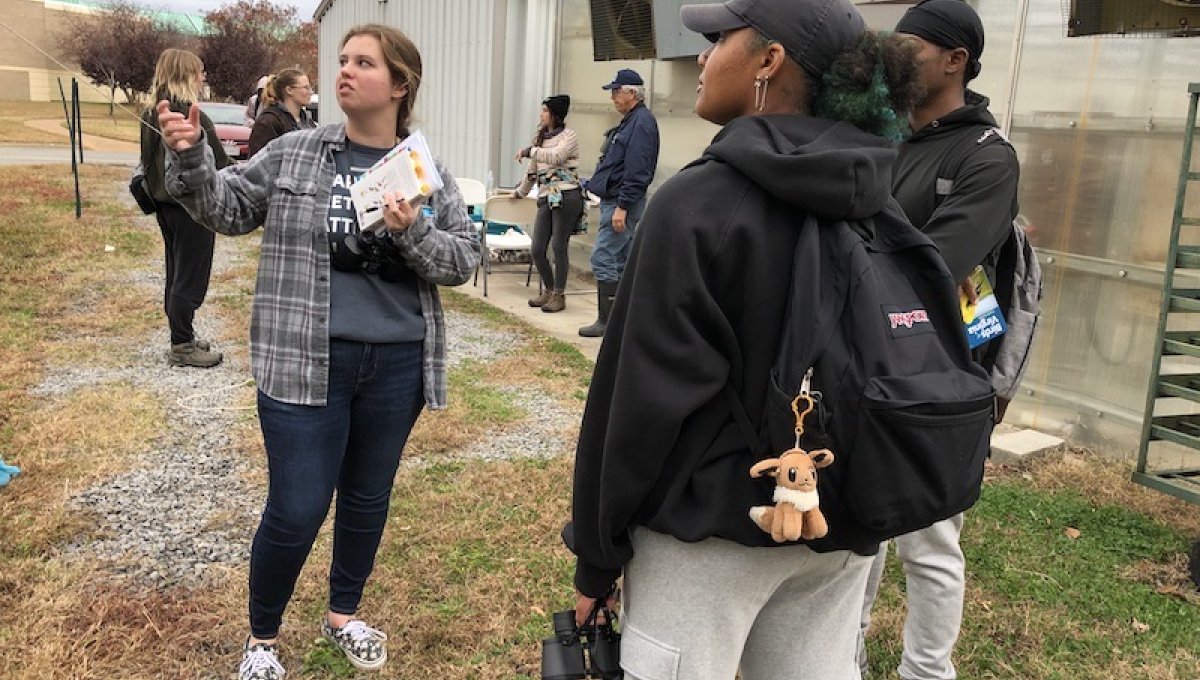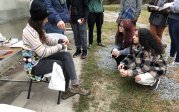It’s a windy, overcast day in late November. A group of Churchland High School students in Portsmouth – cups of hot cocoa in hand – gather around Ella DiPetto, an Old Dominion University graduate research fellow in biology, as she reaches into a small, white bag on her lap.
“So, anyone have any ideas what is in this bag?” she asks the group, which includes fellow ODU graduate students. Her mystery captive gives her a nip. “If they're biting me, that's a good sign,” DiPetto says. “That means they're feisty and they're healthy.”
Slowly, DiPetto reveals a small songbird cradled in her partially closed fist — a bander’s grip, she explains. “You kind of take it between your middle and your index finger and you grasp the neck and hold it firm so it's not moving around too much.”
Switching to a “photographer’s grip,” the bird now clearly visible above her knuckles, she encourages the students to step closer for a better look. Note the yellow eyebrow patch and striped head, she says, the light and dark brown of its wings, the touch of black on its belly and its white throat.
"What do we got, ODU guys?" DiPetto asks.
“A white-throated sparrow,” someone responds. It was one of five caught in virtually invisible nylon mist nets set up along the wooded margins of the school’s property in the pre-dawn hours by students from ODU’s field studies in ornithology class.
The little bird had traveled 700 miles from its birthplace in Canada and was no more than 3 or 4 months old. It was weighed, measured and a tiny silver band with a unique identification number was affixed to its leg before DiPetto released the sparrow back into the wild.
The bird banding demonstration was part of a field excursion that brought together roughly 50 high school students — members of Churchland’s new Wildlife Club as well as environmental and biology classes — and several ODU avian ecology lab students. ODU biological sciences lecturer Julie Jo Walters received a $10,000 grant funded through the Department of Wildlife Resources (DWR) and the Wildlife Foundation of Virginia (WFV) in 2023 to support the new club, which started early last fall. Grant money helped Walters purchase binoculars and field guides used by the students during the field excursion and trail cameras set up in the woods nearby.
Walters and DiPetto volunteer to host club meetings every other week at the school with help from three Churchland science teachers, Cami Field, Carly Carmack and Judith Cozart. The pilot program aims to develop meaningful connections between underrepresented groups, specifically youth, and wildlife in the great outdoors.
"There's a need for this, and we're filling that need,” Walters said. “We want to merge the college that has the resources with the group of students that don't have this access.”
The goal is to show them how to engage with the natural world, she adds. “We are more focused on creating naturalists who have an interest in, and can comfortably enjoy, the outdoors.”
Walters said spring plans for the club include a visit from a Master Gardner to help plan a pollinator garden, constructing a bluebird trail, participating in an ODU grad student’s nest-monitoring research, and a visit from the University’s Tick Ecology Laboratory.
Churchland High School is uniquely situated for wildlife field studies, according to Walters. The arrowhead-shaped property is flanked by woods and coastal tidal wetlands, which buffer fingerlings of creek waters stretching from the nearby Elizabeth River. Industrial noises – train whistles and beeping Port of Virginia machinery – merge with natural sounds, such as the call of a red-bellied woodpecker perched high on a dead tree.
"It's these natural areas that they have around the edge of the school that most people think are wild and untamed and not of any value, and we look at it as the opposite,” said Eric Walters, ODU professor of biological sciences and Julie Jo’s husband.
Eric Walters feels there's a disconnect between learning about biology in a classroom versus experiencing it outside. “It's hard to really understand wildlife biology without being out there and being part of it,” he said. “And then it'sspontaneous, right? So, you're seeing things as it happens. When a bald eagle shows up and flies over you, that has an effect on (students) that they wouldn't otherwise get."
Field excursions help underscore the importance of coastal areas and their inhabitants, particularly in the face of sea level rise, according to Walters. And students get an opportunity to see “how cool their campus is.”
“It can be a lot more than just a place you go and learn inside of a classroom,” he said, adding that the interaction between graduate and high school students provides an opportunity for cross-generational mentorship.
ODU graduate student Alex Wright spent the morning walking groups of high schoolers along the property’s wooded perimeter, sighting birds in trees and on power lines, fielding questions about gulls and describing the difference between the familiar “caw-caw” of the American crow versus the nasally “uh-uh" of the fish crow.
"I wish that I had something like this, especially when I was in undergrad or even high school,” Wright said, noting the significance of being exposed to another aspect of what people can pursue in STEM fields. “It's so rewarding when we're able to do something and then seeing these kids get excited about it.”
Even igniting a small spark of interest is important, she adds.
Churchland juniors Cadence Weber and Nylah Echavarria each joined the Wildlife Club for varied reasons: Cadence saw the names of participating science teachers whose classes she has enjoyed, and Nylah wanted to conquer a personal fear.
"I'm a little bit scared of nature and I don't want to be scared of nature," said Nylah, an AP biology student.
"Everyone's been super sweet. It was nice talking to other people and getting to ask questions," said Cadence, who takes AP environmental science.
They were excited to share some of the animals they had seen captured on the trail cameras set up in the woods around the school — raccoons, opossums, even coyotes. "I thought that not a lot of things like to stay near the school (because) there's a lot of people around it all the time. But it's really cool seeing all of this." Cadence said, sharing images from her cell phone.
Iden Jost, a Churchland senior studying ecology and member of the Wildlife Club, admired how DiPetto handled the small bird during the banding demonstration. “I'd be so nervous," they said, "because it's a three-month-old little baby in your hand."
It’s good to learn more about the environment you live in so you can help protect it, Jost said.
"I think I'll be looking at the trees more often now that I know actually what to look for."



